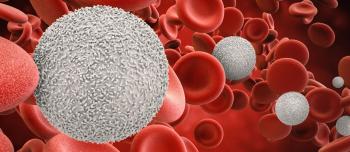Last month, MedPage Today posted the results of a March 2010 survey on prophylaxis (regular, three times per week doses of factor to prevent bleeding) in hemophilia treatment centers (HTCs). The findings were reported as an abstract, “Survey of Current Prophylaxis Practices and Bleeding Characteristics of Children with Severe Hemophilia A in U.S. Hemophilia Treatment Centers,” at the 52nd Annual Meeting of the American Society of Hematology in Orlando, FL, December 2010. The abstract was presented by lead author Margaret Ragni, MD, professor of medicine at the University of Pittsburgh.
The National Hemophilia Foundation’s (NHF) Medical and Scientific Advisory Council (MASAC) encourages the practice in MASAC Recommendation (#179) Concerning Prophylaxis, calling it “optimal therapy for individuals with severe hemophilia A or B (factor VIII or factor IX <1%).”
“Despite these recommendations, more than half of the clinics surveyed do not follow these guidelines, while nearly one-third of the clinics initiate prophylaxis on a weekly schedule to delay or avoid the need for central venous access,” said Ragni.
Investigators sent the e-mail-administered survey to approximately 141 HTCs and received responses from 62 (44%). Of the respondents, 29 (46.8%) treated children with severe hemophilia A with factor VIII on the recommended prophylactic regimen of three times weekly, while 13 centers (21%) gave infusions twice weekly. Notably, 20 centers (32.2%) infused the children once a week. In addition, only about 25 % of the HTCs initiate prophylaxis after one bleed; 56 centers reported initiating it after one or more bleeds.
While Ragni acknowledged medical and practical considerations that might hinder a patient’s adherence to the regimen (risks of infection, high treatment costs, hospitalizations for implanting/maintaining venous access devices), she stressed the importance of prophylaxis. “Prophylaxis dosing is variable in these centers, but children should be on three-times-a-week prophylaxis,” added Ragni.
“The evidence is clear that three-times-a-week dosing benefits children,” said Bruce Evatt, MD, adjunct professor emeritus at Emory University, Atlanta, who was not involved in the study. “But what is recommended isn’t always practical. Certainly there are a lot of children who object to being stuck with needles three times a week, and parents and clinicians who are not anxious to chase after them.”
“These data and conclusions should be considered to be preliminary until published in a peer-reviewed journal,” concluded the MedPage posting.
Source: MedPage Today, December 7, 2010





